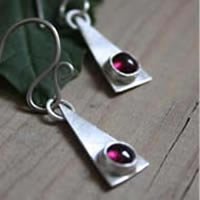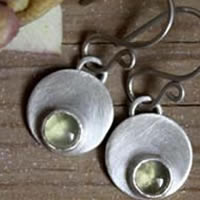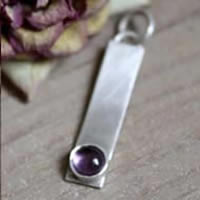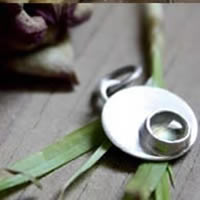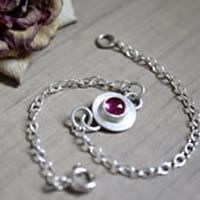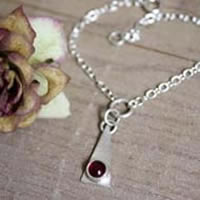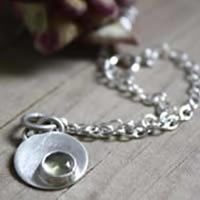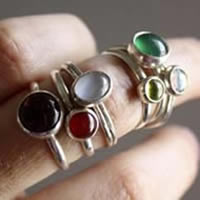- Jewelry
- Inspiration
- Our imagination
- Birthstones
- Celebrating with Eternal Flowers
- Druids and druidesses
- Flower meanings
- History, archeology jewelry
- History and healing properties of metals
- History and healing properties of stone
- Illumination jewelry
- Japanese symbols
- Maya calendar jewelry
- Stone color symbolism
- Stones catalogue
- Wedding anniversaries
- Searches a theme on the site
- Good Deals
- Paintings
- About
- Contact
JEWELRY
- Anklet
- Bracelets
- Brooches
- Cufflinks
- Earrings
- Pendants & Necklaces
- Rings
- Draw your jewelry
- How to clean your jewel
- Metal we used
INSPIRATION
- Our imagination
- Birthstones
- Celebrating with Eternal Flowers
- Druids and druidesses
- Flower meanings
- History, archeology jewelry
- History and healing properties of metals
- History and healing properties stones
- Illumination jewelry
- Japanese symbols
- Maya calendar jewelry
- Stone color symbolism
- Stones Catalogue
- Wedding anniversaries
- Searches a theme on the site
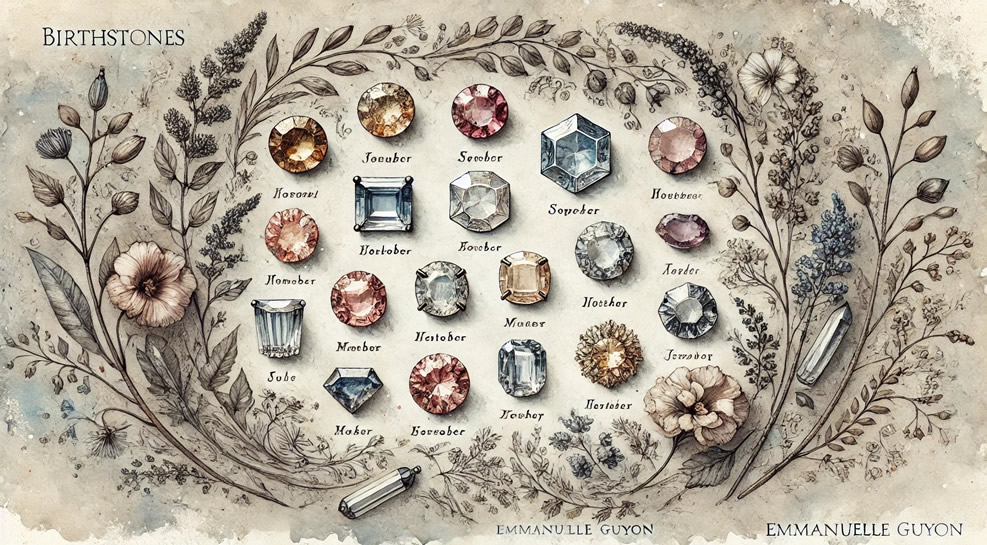
A personalized jewel with birthstones
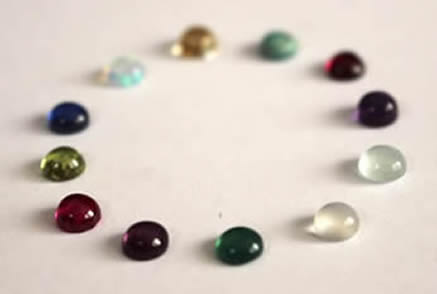
Birthstones are defined by a classification of precious or semi-precious stones, each symbolizing a month of the year. This tradition dates back to antiquity, where stones were believed to have specific virtues based on their correspondence with astrological signs and cosmic energies. Today, gifting jewelry adorned with a birthstone is a highly symbolic gesture, merging aesthetics with personal meaning. These pieces of jewelry (rings, pendants, bracelets, brooches, earrings, anklets...) can be designed according to the birth month of your children, partner, or a loved one, offering a personalized and meaningful gift.
These creations are perfect for birthdays, year-end celebrations, weddings, births, or simply to show affection to a special person. Gifting personalized jewelry with a birthstone combines art and intention, making each piece unique and carrying a deep message.
Making your jewel with a birthstone
We intentionally give you great freedom in designing your jewelry, allowing you to offer a truly personalized piece. Not only do you choose the stone corresponding to the birth month, but you can also define the shape of the jewelry and add engravings or specific designs for a piece that reflects the personality of the person it is meant for.
If you're concerned that a custom-designed piece might exceed your budget, we’ve developed a basic collection to give you ideas and pricing references. These pre-designed models with birthstones are perfect for getting an idea before requesting more advanced customizations tailored to your specific desires.
Our birthstone series: the basic collection
Our jewelry with birthstone: our creations
Over time, we have created various pieces of jewelry featuring birthstones, often for the beauty of the stone rather than with the idea of showcasing them in this section. These pieces are more unique than those in our basic collection, which you can discover by clicking the buttons below. These one-of-a-kind jewels are the result of special inspiration, artisanal craftsmanship, and meticulous attention to detail.
 We remind you that we are a creator jeweler and not a reseller. If one of the birthstone jewelry pieces from our catalog is marked as sold and you like it, do not hesitate to contact us. We are usually able to present you with a similar piece. As creators, we have the ability to customize each piece of jewelry to exactly match your preferences and expectations. Do not hesitate to contact us to discuss your needs and desires.
We remind you that we are a creator jeweler and not a reseller. If one of the birthstone jewelry pieces from our catalog is marked as sold and you like it, do not hesitate to contact us. We are usually able to present you with a similar piece. As creators, we have the ability to customize each piece of jewelry to exactly match your preferences and expectations. Do not hesitate to contact us to discuss your needs and desires.

Search with the following buttons for examples of birthstone jewelry that we have created:
A birthstone jewel with your sketch
Do you want to take customization even further? We can also create a piece of jewelry based on your own design. Whether it’s a ring, a brooch, earrings, a bracelet, an anklet, or even cufflinks, we work from your ideas and desires to craft a unique piece. You can choose the shape, size, metal, and the birthstone that will adorn your creation.
In the case of a ring, please remember to provide us with the exact size of your finger, as well as the desired stones. Once the concept is approved, we will provide you with a quote based on the weight of the piece and the complexity of its creation.
After that, the process is the same as for a personalized piece, the conditions of which you can find on the page: personalized jewelry. We will create a design, and when you are satisfied with it, I will propose a quote based on the weight of the piece and the work it requires.
You can already consult the various examples on the website.
When you will be ready, contact me at contact@emmanuelleguyon.com
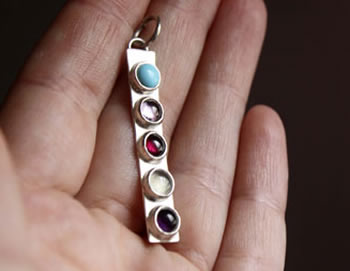
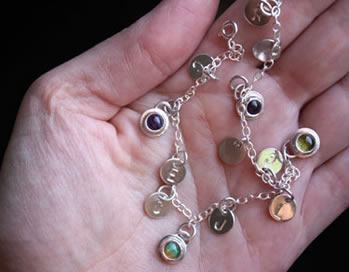
Origins and history of birthstones
The origin of the association of gemstones with each month of the year is indeed a subject of debate, and it is challenging to find a single, definitive explanation. This tradition appears to have its roots in ancient beliefs, but its modern form has evolved over the centuries. For those seeking simple and clear explanations, the task is daunting, as viewpoints differ between those who advocate for an ancient origin and those who see it as a modern invention.
The first group, comprised of staunch advocates of ancient origins, emphasizes the significance of gemstones in various ancient cultures. According to them, the idea of birthstones is linked to the Jewish tradition of the High Priest’s breastplate, which featured twelve stones representing the twelve tribes of Israel. This concept is thought to have traversed ages, influencing Babylonian, Egyptian, and Greco-Roman civilizations, where it was believed that certain stones possessed magical and metaphysical powers connected to astrological signs and lunar cycles. This group often cites mystical texts and ancient legends to justify this connection, but it can sometimes be difficult to separate myth from historical reality, occasionally bordering on the absurd...
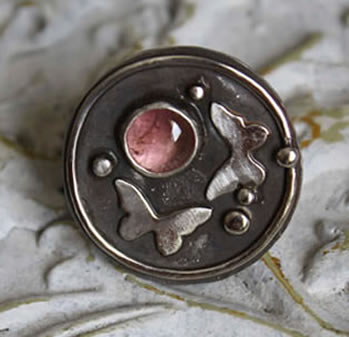
On the other hand, a second group, more pragmatic, argues that the association of gemstones with birth months as we know it today is a relatively recent invention. This tradition is believed to have been codified in the early 20th century, driven by American jewelers, notably in 1912 when the National Retail Jewelers Association standardized the list of birthstones for commercial reasons. This version focuses more on the commercial aspect of the tradition, highlighting that birthstones were used to create an emotional connection and encourage the purchase of personalized jewelry, making each stone a symbol of identity.
Thus, it is challenging to determine the exact origin of birthstones, given the varying interpretations. However, what touches me most is not so much where this tradition comes from, but rather the beauty and intimacy that these stones can bring. Beyond historical or commercial origins, birthstones offer a way to personalize a piece of jewelry and create a deep bond between the giver and the recipient.
Giving a piece of jewelry adorned with a birthstone also creates an object that tells a personal story. Whether to commemorate a birth, a birthday, or simply an emotional connection, this jewelry becomes a link between the past, present, and future. It evokes memories and emotions and serves as a tangible reminder of shared moments with a loved one. For me, it is this intimate and personal aspect that enriches birthstone jewelry the most.
The stones of the twelve tribes of Israel
The exact origin of birthstones remains difficult to determine with certainty, but there seems to be a consensus around their connection to the stones symbolizing the twelve tribes of Israel.
This association is mentioned in the Old Testament section of the Bible, specifically in the book of Exodus. God is said to have commanded Aaron, the high priest of Israel, to create a breastplate bearing twelve precious stones, one for each of his twelve sons who would form the twelve tribes of Israel. This breastplate, known as the Efod, was later worn by the high priests of the Jerusalem temple as a means of communication with God. It was considered a symbol of divine presence and protection. It was worn during religious ceremonies and sacred rituals, and it was believed to enable the priests to communicate with God and receive answers to their prayers.
However, the precise list of stones remains a topic of debate due to different translations and interpretations of biblical texts. The Hebrew names of the stones do not always correspond directly to modern terms, and some stones mentioned in the Old Testament are now less well-known or referred to by other names. This complicates the exact identification of the stones of the tribes of Israel, and scholars differ on the precise correspondence of the gems. Some suggest that sardius, topaz, emerald, or sapphire may correspond to significantly different stones in ancient times.
Table of the tribes of Israel and the associated stones. Bold indicates stones whose translation seems most accurate, italic indicates questionable ones.
| Tribe of Israel | Name of the stone in Hebrew | Associated stone |
| Reouven | Odem | Sardonyx sometimes translated as Ruby or Carnelian |
| Chimon | Pitdah | Topaz |
| Lévi | Bareqeth | Garnet or Emerald (the exact translation was lost) |
| Juda | Nophek | Emerald or Garnet or Malachite |
| Issakhar | Sappiyr | Lapis lazuli or Sapphire |
| Zevouloun | Yahalom | Diamond or Jasper |
| Dan | Leshem | Opal or "Ligure" (unknown stone) |
| Naftali | Shebuw | Agate |
| Gad | Aclamah | Amethyst |
| Acher | Tarshish | Beryl or Chrysolite |
| Yossef | Shoham | Onyx or Beryl |
| Benyamin | Jashepheh | Jasper or Onyx |
Christian symbols and astrology with birthstones
Even though the connection to the tribes of Israel is plausible, the transition to an association between the stones and the months of the year remains unclear. This evolution is thought to have been influenced by astrological and mystical beliefs. As early as the first century A.D., parallels were drawn between the twelve stones and the twelve zodiac signs. It is believed that these correspondences aimed to strengthen the connection between humanity and the universe, with each astrological sign supposedly benefiting from the properties of a specific stone.
During the 8th and 9th centuries, precious stones became the subject of numerous religious and mystical treatises. Medieval scholars not only linked the twelve stones to the zodiac signs but also to the twelve apostles of the New Testament, the foundation stones of the New Jerusalem described in the Book of Revelation, and the twelve gates of the celestial city. At that time, the protective and therapeutic virtues of stones were highly valued, and they were often worn as talismans to ensure protection, luck, and healing for the wearer.
In practice, it was customary in the Middle Ages to wear the twelve stones successively, one for each month, to benefit from their different properties. However, it was probably in the 18th century that the use of a single stone per month, corresponding to the month of birth, became established. This practice is thought to have originated in Poland, where scholars systematized the association of stones with the months, thus uniting Christian tradition with astrological elements.
Birthstones: a jeweler marketing
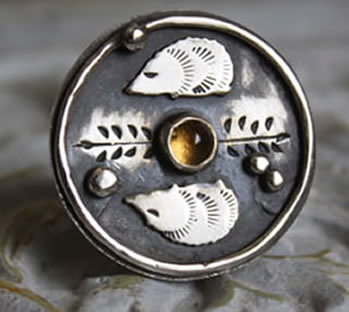
The modern concept of individual birthstones is relatively recent, although attempts are often made to trace its origins to various ancient cultures. The list of birthstones as we know it today was officially established only in 1912 by the Jewelers of America in the United States. Inspired by the symbolic stones of the twelve tribes of Israel, this list primarily aimed to provide a standardized guide for jewelers and their clients.
The selection of stones in 1912 likely followed economic, aesthetic, and somewhat symbolic criteria, although these criteria remain somewhat vague. It’s possible that some choices were also influenced by the availability of stones in the American market at that time, which would have facilitated their commercialization. For example, stones like amethyst or citrine, which were more affordable, could have been more heavily promoted by jewelers to meet a growing demand for "accessible" jewelry while maintaining the precious appeal of the stones.
Since that initial list, several adjustments have been made to adapt the selection of stones to changing market trends. In 1952, several modifications were introduced to include stones that had gained popularity. Alexandrite, a fascinating stone known for its color-changing ability depending on the light, was added as an alternative birthstone for June. Similarly, citrine, known for its warm, golden hues, was included for November, while pink tourmaline became the official stone for October. December’s lapis lazuli was replaced by zircon. These changes appear to have been motivated by aesthetic considerations as well as marketing strategies aimed at diversifying the offerings.
The most recent change, in 2002, saw the addition of tanzanite for December, replacing zircon. Discovered in Tanzania in the 1960s, tanzanite quickly gained popularity for its unique blue-violet color and rarity, prompting the jewelry industry to incorporate it into the list of birthstones. This modification reflects the industry’s ability to adapt to recent geological discoveries and consumer preferences.
It is undeniable that these adjustments have a commercial dimension. By introducing new stones, the industry created an opportunity to stimulate sales and maintain customer interest in modern and diverse jewelry. The inclusion of stones like tanzanite or alexandrite, which are less common, likely allowed jewelers to offer more exclusive options and leverage rarity and novelty to justify higher prices.
However, it would be reductive to view these developments solely as a commercial maneuver. These standardized lists have also clarified offerings for consumers, making jewelry purchases more accessible and understandable. This has fostered the idea of the birthstone as a personal and symbolic gift, a trend that persists today.
In 1937, British jewelers established their own version of the birthstone list, adjusting some choices to better suit the British market. These differences illustrate how each region or culture can adapt birthstones to its own traditions or commercial preferences while retaining the fundamental concept.
Birthstones and months
As mentioned, there are several lists of birthstones, with variations across cultures. The proposed stones from Arabic, Hebrew, or Hindu traditions sometimes lack consensus, particularly regarding the precise association between stones and months. However, for the sake of simplicity and consistency, we will follow here the most commonly used modern list, widely adopted by contemporary jewelers.
To keep it simple and clear, we will only use the current list of birthstones:
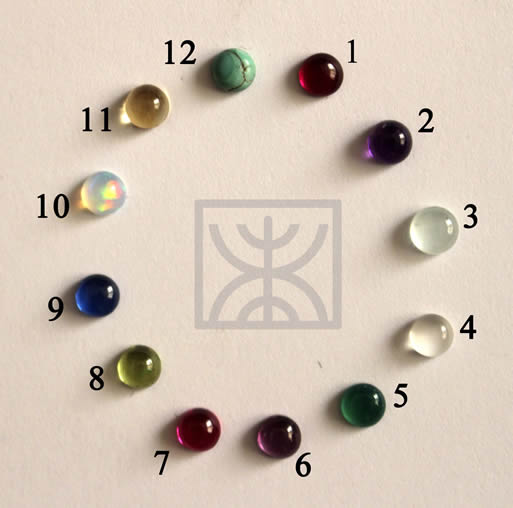
| 1 | January: Garnet | 7 | July: ruby |
| 2 | February: amethyst | 8 | August: peridot |
| 3 | March: bloodstone jasper, aquamarine | 9 | September: sapphire |
| 4 | April: Diamond, white moonstone | 10 | October: opal, tourmaline |
| 5 | May: emerald | 11 | November: Topaz, Citrine |
| 6 | June: Fresh water pearl, moonstone, alexandrite | 12 | December: Turquoise, lapis lazuli, Zircon |
The birthstone, an intimate and personal jewel
Despite the debates surrounding the origins of this tradition, gifting a piece of jewelry with a birthstone remains a deeply personal gesture. Such jewelry goes beyond mere aesthetics; it represents a direct connection to the person it is intended for, symbolizing their birth month and, by extension, their personality. It is this intimate dimension that inspired me to offer a selection of birthstone jewelry in the shop.
Choosing a stone based on the birth month not only simplifies the selection process but also adds a unique emotional significance. It is not just a piece of jewelry; it is a symbol of the individuality and character traits of the person. According to certain traditions, each birthstone carries a particular energy or power that is said to resonate with the wearer.
Character traits and birthstones
While we remain cautious about certain interpretations regarding the correlation between stones and personality traits, it is interesting to note the symbolic associations that have persisted through the ages. Each stone is believed to represent specific qualities or virtues, often attributed to individuals born in a particular month.
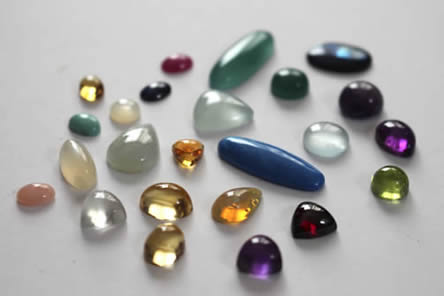
January and Garnet
The garnet, the birthstone for January, is often associated with passion, vitality, and strength. This stone, ranging in color from deep red to purple, symbolizes energy and determination. It is said that those born in January are motivated individuals, capable of overcoming challenges with courage and tenacity.
Traditionally, garnet is also considered a protective stone. In ancient times, it was used as a talisman to ward off dangers and bring prosperity. People born in January who wear garnet are often seen as natural leaders, loyal friends, and individuals deeply connected to their goals. Their perseverance and inner strength make them trustworthy companions and partners.
Garnet is also linked to regeneration and revitalization. In healing practices, it is said that this stone promotes the flow of vital energy, helping to restore physical and emotional balance. As such, wearing a garnet jewelry piece can serve not only as a symbol of protection but also as a source of positive energy for those seeking revitalization.
February and Amethyst
Amethyst, the birthstone for February, is not only known for its beauty, with shades of violet ranging from pale to deep, but also for its symbolic qualities. Since ancient times, amethyst has been associated with wisdom, clarity of mind, and inner peace. It has long been used as a talisman for spiritual protection, said to elevate the soul and encourage meditation, helping those who wear it to achieve a state of mental tranquility and emotional balance.
Individuals born in February, who choose or receive an amethyst piece, are often seen as deep thinkers with a strong capacity for reflection. Amethyst is also believed to enhance their intuition and insight, allowing them to analyze situations with calmness and wisdom. This stone symbolizes the quest for truth and deep understanding, qualities that characterize those connected to it.
In ancient traditions, particularly in Greece, amethyst was considered a stone of sobriety. Its name derives from the Greek "amethystos," meaning "not intoxicated," and it was thought to protect against drunkenness, both physical and mental. Therefore, it also serves as a symbol of self-control and concentration, virtues often associated with those born in February.
Amethyst is often linked to purification and protection, and in the realm of crystal healing, it is used to calm the mind, alleviate stress, and dispel negative thoughts. This stone is said to help balance emotions, fostering a better connection to oneself and lasting inner peace. Those born in February, when wearing amethyst, are seen as capable of protecting themselves from negative influences and remaining aligned with their moral principles.
On a physical level, amethyst is associated with healing issues related to stress, such as insomnia or migraines. It is considered a regenerating stone, helping to strengthen the immune system and restore overall balance in the body.
March, Bloodstone and Aquamarine
Bloodstone, also known as heliotrope, is the birthstone for March, renowned for its energetic qualities and protective effects. Symbolizing strength and vitality, this stone was once used by warriors to protect themselves and bolster their courage before battles. Individuals born in March who identify with bloodstone are perceived as dynamic, energetic, and determined. The stone also enhances self-confidence and helps to overcome obstacles. It is often associated with a strong sense of justice, bestowing upon its wearer a desire to protect and defend those they hold dear. In crystal healing, bloodstone is used to revitalize the body, improve blood circulation, and stimulate the body’s healing abilities. This suggests that those born in March are also resilient, possessing great physical and mental endurance.
Aquamarine, also associated with March, is a stone that evokes clarity, serenity, and harmony. Its name, which literally means "water of the sea," reflects its close connection to emotions and calming energies. This stone is often chosen to promote authentic communication and soothe inner tensions. Individuals born in March, linked to aquamarine, are considered peaceful, thoughtful people with a great ability to remain calm in difficult situations. They are creative and open-minded, capable of approaching problems from different angles while maintaining clear thinking. Aquamarine is also recognized for its purifying and protective properties, particularly concerning emotions and relationships. It is ideal for those seeking emotional balance or wishing to strengthen their spiritual connection with themselves and others.
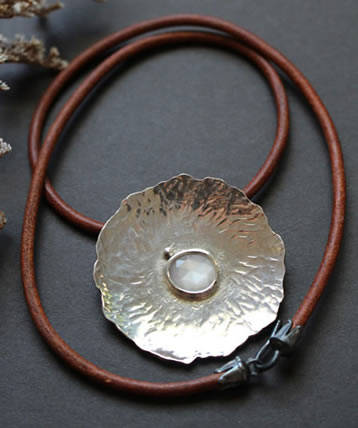
April, Diamond and White Moonstone
The diamond, the iconic birthstone for April, reflects the strong and determined character traits of individuals born in this month. These individuals are distinguished by their resilience and their ability to face challenges with unwavering willpower. Just like the diamond, a symbol of purity and invincibility, they possess an inner strength that makes them difficult to shake in the face of life’s obstacles. Their clarity of vision and ability to make firm decisions often make them natural leaders. Tenacity and ambition are at the core of their personality, and they do not hesitate to set high goals. Wearing a diamond enhances their determination and ability to stay focused while symbolizing their desire for perfection and excellence.
On the other hand, the diamond is also renowned for its protective and healing virtues. As a stone symbolizing light and purity, it represents the ability of those born in April to bring clarity and stability to their environment, thus protecting those around them with a certain moral authority. Their keen sense of integrity makes them reliable and loyal individuals who always aspire to truth and justice.
White moonstone, another birthstone associated with April, embodies more subtle yet equally powerful character traits. Individuals born in April who wear this stone are often recognized for their heightened intuition, emotional sensitivity, and fertile creativity. Moonstone, known for its feminine energies and connection to spirituality, resonates with those who deeply perceive the emotions of others and possess a rich imagination. People born in April under the influence of white moonstone often have an innate ability to create deep connections with those around them, thanks to their capacity to feel and understand feelings.
These individuals are also highly introspective, frequently seeking answers to existential questions. They value moments of calm and reflection, where their creativity can flourish. For them, white moonstone symbolizes a spiritual guide, helping to clarify their thoughts and connect with their deepest intuitions. April-born individuals who identify with this stone are often artists, thinkers, or spiritual leaders, capable of seeing beyond appearances to grasp the true essence of things. Their sensitivity does not render them vulnerable but rather connects them more deeply to themselves and others, with a natural ability to heal hearts and minds through their empathy.
May, Emerald and Green Onyx
Emerald, the birthstone for May, symbolizes not only wisdom and clarity of mind but is also closely linked to rebirth and prosperity. Individuals born in May, influenced by this stone, are often perceived as having a deep connection to nature and a love for new ideas. They aspire to grow and continuously improve. Emerald bearers are also renowned for their loyalty and their ability to foster peace in tense situations. It is often said that emerald amplifies truth and encourages sincerity, reflecting the tendency of those born in May to seek authenticity in their personal relationships.
Emerald is also a symbol of unconditional love, indicating that May-born individuals have a profound capacity to love deeply and dedicate themselves to those they hold dear. Their desire for harmony extends to both relationships and daily life, and they are often viewed as natural mediators.
Green onyx, on the other hand, is associated with inner strength and determination. People born in May who wear this stone are often natural leaders, endowed with great endurance and the ability to overcome obstacles. This stone provides a balance between strength and sensitivity, offering May natives a firm yet fair approach to life. In addition to the self-confidence it inspires, green onyx is known for stimulating perseverance and endurance—qualities commonly found in those who tenaciously pursue their goals.
Green onyx is also a protective stone, particularly against negative influences, reinforcing the idea that individuals born in May seek not only to protect themselves but also to shield those they love. They possess a strong personal ethic and a keen sense of justice that guides their actions.
June, Cultured Pearl, Moonstone, and Alexandrite
Cultured pearl, moonstone, and alexandrite are all birthstones for the month of June, each with its own meanings and symbolic associations.
The cultured pearl, symbolizing purity and femininity, reflects the softness and elegance of those born in June. Known for its refined and natural luster, the pearl is often viewed as a metaphor for transformation and inner growth. Individuals born in June are perceived as having a great capacity to bring peace and harmony to their surroundings. Their kind nature and willingness to care for others make them highly appreciated within their communities. The cultured pearl, formed from a grain of sand, also symbolizes the ability to transform difficulties into beauty, aligning with the resilient attitude of these individuals who draw wisdom from adversity.
Moonstone, associated with sensitivity and intuition, evokes the dreamy and imaginative aspect of June-born individuals. They often have a deep connection to their emotions and can navigate complex situations thanks to their sharp perception. Their ability to feel the emotions of others and understand unspoken sentiments makes them highly empathetic. Moonstone, a mystical stone linked to lunar cycles, further emphasizes the idea of transformation and evolution, rendering these individuals extremely creative and capable of adapting and flourishing in changing environments. Those born in June who wear this stone are often in search of meaning and spirituality, drawn to the invisible worlds and the unknown.
As for alexandrite, it is a stone of transformation and prosperity. Known for its ability to change color depending on the light, it symbolizes flexibility and adaptability. Individuals born in June under the influence of alexandrite are often ambitious and open to change, ready to reinvent themselves to seize life’s opportunities. They possess a dynamic energy that drives them to constantly improve and overcome obstacles. Alexandrite is also associated with luck and prosperity, highlighting the natural optimism and confidence of June natives. They often attract unexpected opportunities and know how to capitalize on them thanks to their insight and boldness.
July and Ruby
The ruby, the birthstone for the month of July, has long been regarded as a symbol of fiery passion, overflowing vitality, and inner strength. Individuals born in July are often perceived as dynamic personalities, full of life and energy. This intense energy manifests not only in their approach to life but also in how they pursue their goals with determination and perseverance.
Wearing a ruby not only provides a sense of emotional protection but also reinforces integrity. This connection to integrity highlights the fact that July natives are often guided by strong ethical principles, demonstrating loyalty to their loved ones and reliability in their commitments.
The ruby is also considered a stone of healing and regeneration, both physically and emotionally. This reflects the ability of those born in July to bounce back after challenges, finding the strength to renew themselves and continue moving forward with courage. Their ambitious and determined nature often drives them not to shy away from obstacles but to overcome them with resilience.
In ancient cultures, the ruby was also seen as a protective talisman, believed to ward off evil and attract prosperity. This connection to luck and protection further enhances the image of those who wear rubies as possessing exceptional strength of character and the ability to overcome life’s challenges.
August and Peridot
Peridot, the birthstone for the month of August, is associated with traits such as growth, luck, prosperity, and protection. Individuals born in August are often seen as optimistic and energetic, capable of making the best out of even the most complex situations. Peridot, with its bright green color, symbolizes renewal and vitality, perfectly reflecting this attitude of continual personal growth.
August-born individuals typically have an ambitious spirit and an unwavering determination to achieve their goals. Peridot is particularly valued for its ability to attract luck and foster prosperity, which aligns with the temperament of August natives, who often see opportunities where others see obstacles. This stone is also linked to protection from negative energies, echoing how August-born individuals often surround themselves with a trusted circle to shield themselves from harmful influences.
Peridot also holds strong spiritual significance. It is reputed to enhance self-healing and emotional balance, suggesting that August natives often possess a remarkable ability to recover swiftly from life’s challenges while maintaining integrity and morality in their decisions. The connection between peridot and healing reinforces the idea that those born under this sign can positively influence those around them, offering restorative energies and constant support.
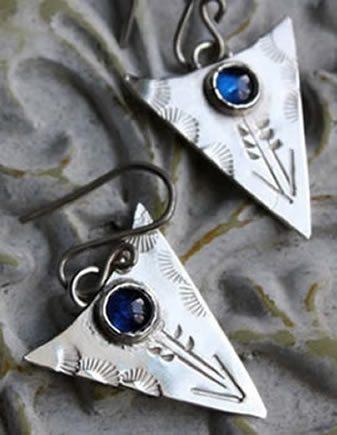
September and Sapphire
The sapphire, birthstone of September, embodies wisdom, mental clarity, inner peace, and spirituality. People born in September are often seen as calm and thoughtful individuals, seeking truth and knowledge. This connection to the pursuit of truth has its roots in history, where sapphire was considered the stone of kings and sages, believed to offer divine protection and enhance foresight.
September natives, frequently regarded as deep thinkers, enjoy examining things from multiple perspectives and are often characterized by a strong sense of justice and fairness. The sapphire, which also symbolizes loyalty and fidelity, mirrors their sincere commitment in relationships and their ability to inspire trust. Its blue color, a symbol of peace and serenity, enhances this calming influence on those born in this month.
In crystal healing, sapphire is used to balance emotions, soothe the mind, and improve concentration, aligning perfectly with the nature of September-born individuals, who are often calm yet determined. Associated with purification, this stone helps dispel negative energies, thereby strengthening the moral integrity and spiritual protection of those born in September. They are frequently viewed as models of righteousness, guided by a strong ethical compass and deep inner wisdom.
October, Tourmaline and Opal
The opal, October’s birthstone, is often associated with creativity, inspiration, and imagination. Those born in October who wear opal are frequently perceived as free spirits, capable of thinking outside the usual boundaries. Their originality and ability to express unique ideas make them creative, intuitive, and sensitive individuals. The opal is also known for its color variations depending on the light, which mirrors the adaptable and ever-changing nature of those born in October. These individuals may sometimes appear enigmatic or unpredictable, but their strength lies in their ability to adapt to their environment while remaining true to their core nature.
Opal is also seen as a stone of luck and happiness, which aligns with those born under this sign, who tend to find opportunities in complex situations. Their keen perception and intuition help them navigate difficult circumstances with grace.
Tourmaline, another stone associated with October, is linked to protection, emotional balance, and healing. People born in October who wear tourmaline are often regarded as protective and reliable individuals. They tend to be pillars of strength for those around them, providing stability and support during times of need. Tourmaline, often used to dispel negative energies, reinforces this idea of defense against external influences, while helping October natives remain centered and balanced.
Additionally, these individuals possess a strong sense of justice and are often determined to achieve their goals while maintaining balance in their personal and professional lives. Tourmaline also symbolizes the ability to overcome obstacles with resilience, a common trait among those born in October who face challenges with determination and calm.
November, Topaz, and Citrine
Topaz, the birthstone for November, is deeply connected to wisdom, mental clarity, and inner peace. Those born in November who wear topaz are often seen as individuals with a great sense of inner serenity. Their ability to remain calm even in complex and stressful situations makes them pillars of stability for those around them. They are thoughtful and wise, with a natural ability to view things from various perspectives, which aids them in making well-considered decisions. Topaz, as a stone of protection and purification, also symbolizes strong moral integrity. November-born individuals are often committed to strong ethical principles and strive to act justly, in line with their deep-rooted values.
Furthermore, topaz is also known for strengthening emotional bonds, indicating that those who wear it are particularly devoted to their personal and familial relationships, placing high value on harmony and the well-being of their loved ones.
Citrine, another birthstone for November, radiates vitality, self-confidence, and dynamism. Those born in November who wear citrine are often seen as energetic and ambitious individuals. Their passion for what they undertake is evident in their persistence in achieving their goals. Citrine is also associated with abundance and prosperity, reflecting the nature of November natives, who are often eager to seize opportunities with enthusiasm and turn challenges into success.
Moreover, citrine is a stone of healing and protection, known for dispelling negative energies. Those born in November who wear citrine often possess an innate ability to overcome difficulties and maintain a positive attitude in the face of obstacles. They have a gift for transforming difficult situations into sources of personal growth and success, showcasing their determination and resilience.
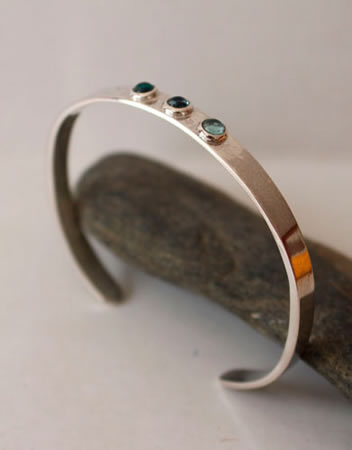
December, Turquoise, Lapis Lazuli, Zircon.
Turquoise, the birthstone of December, is associated with characteristics such as protection, luck, healing, and wisdom. People born in December who wear turquoise are often considered lucky and prosperous individuals, who have a great ability to adapt to changes and seize opportunities that come their way. They tend to be ambitious and determined individuals, who have great self-confidence and are willing to take risks to achieve their goals. Turquoise is also associated with protection and healing, which may indicate that people born in December often have a strong sense of integrity and morality.
Lapis Lazuli, another birthstone of December, is associated with traits such as wisdom, clarity of mind, inner peace, and spirituality. People born in December who wear lapis lazuli are often considered calm, thoughtful, and serene individuals. They tend to be deep thinkers and have a great ability to understand others and see things from different perspectives. Lapis Lazuli is also associated with protection and purification, which may indicate that people born in December often have a strong sense of integrity and morality.
Zircon, another birthstone of December, is associated with traits such as strength, vitality, self-confidence, and determination. People born in December who wear zircon are often considered dynamic, energetic, and ambitious individuals. They tend to be passionate about what they do and pursue their goals with determination and perseverance. Zircon is also associated with protection and healing, which may indicate that people born in December often have a strong sense of integrity and morality.
The birthstone, a gift, many occasions
The birthstone is a particularly endearing gift that offers a multitude of symbolic occasions and memories for a significant moment.
- For a child, it’s like a little symbolic lucky charm of their birth month, in the form of earrings for a little girl, a bracelet for a little boy, perhaps adorned with the engraved name...
- For a mother, it’s a gift to give herself or to be given, with a stone symbolizing her child, or stones for each of them. We can imagine a ring supporting one of the birthstones, or several combined rings, one for each child. Or on a bracelet, a brooch... or why not an equivalent object for dad :) This gift will be perfect for Mother’s Day but also for future mothers.
- A pair of rings, to symbolize your birth month and that of your partner, a beautiful symbol of your relationship.
- To mark a special event like the month of your dear and tender’s meeting.
- The achievement of an important exam or a diploma...
The birthstone is a gift that can be worn with pride and always reminds the recipient of a special moment in their life.

